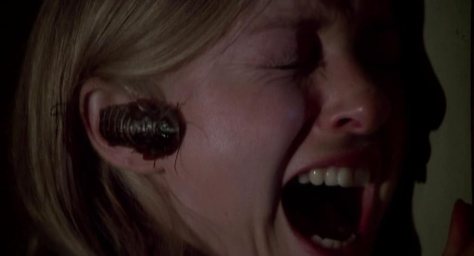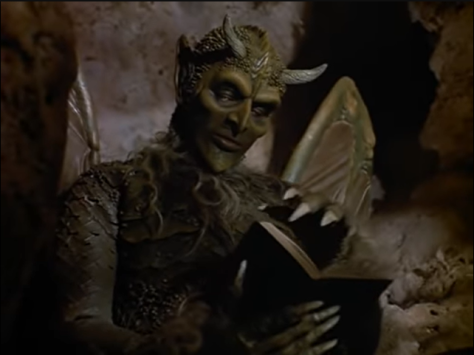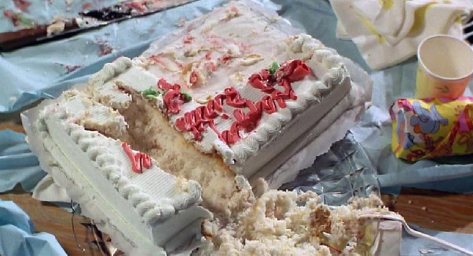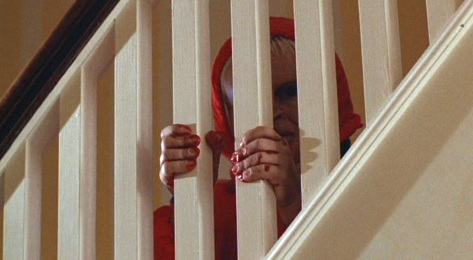

Let’s return to the Showa era, and examine how the Godzilla series looked towards the youth in two different ways.
Continue reading Zillatinum: Part 3 (All Monsters Attack & Godzilla vs. Gigan)

Let’s return to the Showa era, and examine how the Godzilla series looked towards the youth in two different ways.
Continue reading Zillatinum: Part 3 (All Monsters Attack & Godzilla vs. Gigan)
As the seventies dawned, Doctor Who went through several major changes: it was broadcast in colour, Jon Pertwee took over the lead role, and for a few years they changed the format of the show, locking it to a contemporary Earth setting without the Doctor’s time and planet-hopping shenanigans. In effect, this meant that most of the stories were made in the image of ones like “The Web of Fear”, with the Doctor working with a special military organization, which placed the “monsters in your backyard” concept at the forefront more often than not. Even with a more traditional adventure story structure in place, the series honed its horror credentials, and the early years of colour Doctor Who scarred generations with serials like “Spearhead From Space” (the first story of the era) and “Terror of the Autons”, which showed everyday plastic objects (including department store mannequins) transformed into deadly menaces—this is the era when the show really started living up to its legacy of making kids to “hide behind the couch.” Meanwhile, other stories, like the early serial “The Silurians” (where the monsters are allowed to be even a little sympathetic) showcased different and interesting ambitions in the monster space. Even when the plots became more limited in some ways, the creative minds at the helm adapted around those limitations and continued to develop the show’s distinguishing features.
Considering that I’ve written about two stories set on our planet, for the sake of variety I’ve chosen to skip to the fourth year in Pertwee’s tenure, when the series returned to journeys across time and space. The second story of the series’ tenth season has many intriguing qualities, including its wonderfully simple yet evocative title*, but most importantly is another serial written by Robert Holmes, who would go on to write previous site subject “The Ark in Space” (Holmes also wrote the aforementioned “Spearhead From Space” and “Terror of the Autons”, so he was making a name for himself on this series early), and with several more beloved stories to his name, he remains one of the more celebrated creative figures in the show’s history. As in his later stories, “Carnival of Monsters” demonstrates Holmes’ knack for infusing even standard-sounding Sci-Fi scenarios with his sardonic sense of humour, and in this case even carries a slyly meta take on the series itself.

So, who were the people behind all the drive-in filler in the seventies? Sometimes, it was small-time movie industry outcasts, as we saw in Blood Freak—but in this case, it was Hollywood veterans trying desperately to stay in the game in whatever way they can. The Cremators was written and directed by Henry Essex, who was the writer or co-writer of both It Came From Outer Space and The Creature From the Black Lagoon, two of the most significant entries in the fifties Sci-Fi and monster movie canons. He otherwise mostly stuck to either crime films or TV, but apparently thought he could return to his glory days in the seventies, writing and directing both this movie and the previous year’s even more infamous Octaman. You can certainly find a vein of that fifties B-movie energy in Cremators—it’s based on a high concept monster and features a lot of standing around trying and mostly failing to make sense of that high concept monster—but unlike the mid-sixties movies I’ve written about previously, this is very clearly trying to feel contemporary. Maybe that’s part of the issue: reminding you that it is 1972, with colour and almost two decades of movies to compare it to, does something like this very few favours.

I hope you didn’t get your fill of cockroaches from the last entry, because here’s even more of them! Bug comes with two major distinctions off the top: it’s the fourth movie I’ve written about with animal and/or plant photography from Ken Middleham, master of the artful micro-creature shot since at least The Hellstrom Chronicle, and it’s the final film produced (and co-written) by William Castle , master of the gimmick horror movie since at least The Tingler. Middleham’s contributions are front-and-centre, with the same sort of creative creepy crawly camerawork that you saw in Phase IV, which had been released the previous year. The contributions of Castle are maybe not as obvious—when I think of his classic movies, I think of things with a bit more macabre joviality to them than what you see in this; it also lacks one of his signature theatrical gimmicks, although he claimed to have taken out a one million dollar life insurance policy for the movie’s “lead cockroach”, and apparently tried to find some way to give random audience members the sensation of things crawling on their legs. On the other hand, Castle has always had fairly eclectic tastes when it came to thrillers, and this is a very eclectic movie, the sum of many different clashing ideas that produces something truly and memorably strange.

Monster movies were in a bit of a slump in the seventies, but began to pick up steam starting in the eighties. This, I think, can primarily be attributed to the rise of increasingly complicated special effects, and the dedicated studios producing those effects that started pushing the limits on the imagination and believability of monsters in film. Once monsters stopped looking so much like guys in rubber suits, a number of possibilities began to open up, and movie studios noticed. Stan Winston and his studio were among the pioneers in that space, providing award-winning effects for some of the biggest movies of the eighties and nineties.
But before he could be the director of Pumpkinhead, Winston had to start somewhere, and that somewhere was the 1972 TV movie Gargoyles, his first credited work as a make-up artist (a credit that he apparently had to fight for), which won the 1973 Emmy in the make-up category alongside effects overseers Ellis Burman Jr. (“prop manufacturer” for Prophecy) and Del Armstrong. You can tell that they really wanted to emphasize the make-up effects in this thing because they include several publicity shots and scenes of the titular gargoyles in the opening narration as it slips from quoting Paradise Lost to giving an entire history of gargoyles before we’ve had a chance to catch our breath. Seeing the monsters before the movie even begins would seemingly spoil the surprise, but I guess the question is…what surprise? This is a TV movie made in 1972.

This month, I’ll be focusing on sequels to movies I’ve written about previously—and while there’s a really tendency in horror movies especially to push out a series of cheap follow-ups made by workman creatives to capitalize on even mild amounts of brand recognition (which was accelerated during the heyday of the VHS market), sometimes you’ll find sequels that have more going for them. Larry Cohen’s 1974 killer baby classic It’s Alive is the kind of simple shock concept that an exploitative producer may want to turn into cheap grindhouse fodder, but both sequels were written and directed by Cohen himself, which indicates to me that the B-movie auteur still had ideas worth exploring. Larry hasn’t led me astray yet!
Even so, the surprisingly human-focused and emotional story of the original It’s Alive seems like a trick that you can only pull once—and I can say that It Lives Again/It’s Alive II does not equal its predecessor on that front. Despite that, Cohen is doggedly intent on actually following up on the implications of the original’s ending, where we learn that murderous mutant babies are being born across America. As one would expect from Cohen, this new story goes in some weird directions, sometimes logically considered and sometimes pure nightmarish grotesque, and the ways it parallels the beats of the first one continue many of its themes while presenting them in a slightly different light. Although escalation is certainly at play here, it’s not as simple as just multiplying the number of monster babies and car chases.

Although well-known in horror circles since their original publication, it took a long time for anyone to even take a crack at putting H.P. Lovecraft’s distinctly bizarre terrors on screen, and when they did, it was often subsumed by the aesthetics of more established horror—Roger Corman’s adaptation of “The Case of Charles Dexter Ward”, The Haunted Palace, even slapped Edgar Allan Poe’s oh-so-marketable name on the poster! Daniel Haller started out as the art director on Corman’s Poe series for AIP, and then went on to direct previous site subject Die, Monster, Die!, an adaptation of Lovecraft’s “The Colour Out of Space” that hues closely to the Gothic haunted house sensibilities of the Poe films. A few years later, Haller returned for another whack at a Lovecraft adaptation, one based on his 1928 novella “The Dunwich Horror”, and this time there may have been a more concerted effort to capture the particular supernatural atmosphere of a Lovecraft story, not simply plastering his ideas on top of typical witchcraft shenanigans and pagan robes—this is one of the first times the word “Necronomicon” was spoken in a movie (the actual first time was in…The Haunted Palace.) Even so, there’s a feeling in Haller’s Dunwich Horror of being something trapped between several competing styles—Lovecraft, some fleeting remnants of Corman’s Poe films, and a streak of late sixties psychedelia—producing a shambling, patchwork abomination not unlike the ones you find in The Dunwich Horror.

David Cronenberg’s name is synonymous with body horror—he spent the first three decades of his career defining it (and recently came back to it after a long absence), pushing the envelope when it came to fleshy protuberances and disturbing hybridization. But as repulsive as the effects could be in his movies, they’ve never really felt like puerile shock for its own sake, as there has always been a sense of fascination about the way bodies could be warped, and an equal amount of fascination with how physical changes affect people. They are visceral both physically and psychologically, and that’s why Cronenberg’s filmography is a thing unto itself, an idiosyncratic fusion of horror and science fiction.
It all started in low-budget exploitation films of the seventies, beginning with Rabid and Shivers, all shot in his home town of Toronto (where all, or at least most, of his movies have been filmed), which overcame moral outcry from local sources who took umbrage at their combination of sex and violence to be reasonably profitable, allowing him to continue making increasingly larger-scale movies. All of his obsessions were there from the beginning, from bizarre body modifications and infections to, yes, a combination of sex and violence (and music brought to us by regular collaborator and future Lord of the Rings composer Howard Shore)—and his seventies run culminated in The Brood, distributed by Roger Corman’s New World Pictures, which was the big leagues, comparatively speaking. Here, Cronenberg went beyond just the parasitic terror of his first two movies and turned to both parenthood and psychotherapy, and with those themes created some of those notably Cronenbergian images that would define his aesthetic. But this is a movie that is also deeply personal in a way that his other movies aren’t, which makes it all the more disturbing.
Continue reading Creature Classic Companion: The Brood (1979)

This is a movie about a man who becomes a mutant, blood-drinking man-turkey due to a combination of bad weed and unethical experimentation on poultry. Not to spoil too much too early, but it’s also a movie where the solution to the problem is embracing Christianity. Could this seemingly incompatible combination of ideas come together at any other time in history but 1972*? To be honest, they barely come together even then.
Hidden beneath Blood Freak‘s home video production values, sub-amateurish acting, and plot so ludicrous that you’d need to come up with some pretty strong arguments just to convince people that it’s not parody, are a number of fascinatingly contradictory messages that mark it as unique even among the lowest of the seventies exploitation schlock. It’s a movie built to be served to the bored young people who were going to see horror in the early seventies, but ungracefully tries to pull a bait-and-switch and pushes a Come to Jesus message even while pouring on the fake blood. It’s not even a case of it not being smart enough to be subtle—it tells you, straight to your face, what its message is. It tries its damndest to show the horrifying consequences of what it sees as an age of self-destructive debauchery, and does it in the form of something that only those partaking in said debauchery would ever think to watch: a violent monster movie that makes no sense. In some ways, this is kind of genius, although a genius that is readily disproved by the actual execution.

I swear I didn’t plan on reviewing so many British B-movies so close together. Even compared to The Mutations, from just three years earlier, Prey (sometimes titled Alien Prey) is pure seventies exploitation, and all the seediness that entails—but while Mutations still had a foot in the old days of ridiculous programmers, this one is much more, let’s say, “modern” in its concerns. Still, like many of the other British monster movies I’ve written about, its story is essentially an awkward mash-up of two different ones, except in this case I think they actually play off each other in sometimes clever ways. Uniquely, it benefits from feeling like a film made by space aliens, appropriate considering its subject matter—with its combination of slightly creative (if sometimes inexplicable) low-budget filmmaking and performances that are strange but fully committed, it has a surreal quality to it. Yes, even more surreal than a high concept pitch of “what if a lesbian thriller was interrupted by the appearance of an extraterrestrial cat-man?” would indicate on its own.